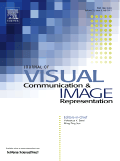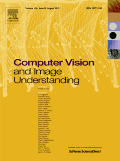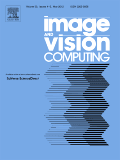
JOURNAL OF VISUAL COMMUNICATION AND IMAGE REPRESENTATION
metrics 2024
Advancing Knowledge in Visual Communication
Introduction
JOURNAL OF VISUAL COMMUNICATION AND IMAGE REPRESENTATION, published by Academic Press Inc Elsevier Science, is an influential platform dedicated to the realms of visual communication, media technology, and advanced image representation. With a strong focus on interdisciplinary approaches, this journal aims to foster the exchange of innovative ideas among researchers and professionals in the fields of computer vision, image processing, and signal processing. Recognized for its significance, it boasts an impressive impact factor within its category quartiles; notably, it ranks Q2 in Computer Vision and Pattern Recognition and Electrical and Electronic Engineering, while achieving Q1 in Media Technology. Based in the United States, the journal not only provides valuable insights into the latest developments from 1990 to 2024 but also encourages cutting-edge research that enhances multimedia systems and user interactions. As a vital resource for students, researchers, and industry professionals alike, the journal ensures a robust understanding of visual information processing, critical for navigating today's digital landscape.
Metrics 2024
 0.67
0.67 2.60
2.60 2.40
2.40 96
96Metrics History
Rank 2024
Scopus
IF (Web Of Science)
JCI (Web Of Science)
Quartile History
Similar Journals

Image Processing On Line
Advancing the frontiers of image processing research.Image Processing On Line (ISSN: 2105-1232, E-ISSN: 2105-1232) is a pioneering open-access journal published by IMAGE PROCESSING ONLINE-IPOL since 2011, dedicated to advancing the field of image processing through the dissemination of high-quality research and innovative methodologies. Based in France, the journal serves as a platform for researchers, professionals, and students to share insights and breakthroughs in the rapidly evolving domains of Signal Processing and Software. With its current ranking as Q4 in both categories according to the 2023 category quartiles, and a Scopus ranking highlighting its significance within the computer science field, the journal is focused on nurturing contributions that push the boundaries of image processing techniques. Accessible to a global audience, Image Processing On Line is crucial for those engaged in both theoretical explorations and practical applications, ensuring a collaborative repository of knowledge that fosters innovation and development in this vital area of technology.

VISUAL COMPUTER
Bridging Disciplines in Visual Computing ExcellenceVISUAL COMPUTER is a prestigious journal published by Springer, focusing on the dynamic fields of computer graphics, computer-aided design, computer vision, and software. Established in 1985, this interdisciplinary journal serves as a vital platform for sharing innovative research, applications, and developments crucial to the advancement of visual computing technologies. With a notable Q2 ranking in various categories, including Computer Graphics and Computer-Aided Design, and Computer Vision and Pattern Recognition, VISUAL COMPUTER demonstrates a solid impact within the academic community, marked by its Scopus rankings that reflect its significant contributions to the field. While the journal does not offer open access, it remains a reliable source of high-quality content for researchers, professionals, and students eager to stay abreast of emerging trends and techniques, ultimately fostering collaboration and knowledge exchange within the rapidly evolving landscape of visual computing.

COMPUTER VISION AND IMAGE UNDERSTANDING
Connecting Theory and Application in Computer VisionCOMPUTER VISION AND IMAGE UNDERSTANDING is a leading academic journal published by Academic Press Inc, Elsevier Science, dedicated to the advancement of the fields of computer vision, image understanding, and pattern recognition. Since its inception in 1993, this esteemed publication has garnered a reputation for excellence, achieving a remarkable Q1 ranking in the categories of Computer Vision and Pattern Recognition, Signal Processing, and Software as of 2023. With its robust impact factor and high visibility in the scientific community—ranking #22 out of 106 in Computer Vision and Pattern Recognition and #27 out of 131 in Signal Processing—this journal serves as a vital resource for researchers, professionals, and students looking to explore and contribute to state-of-the-art developments. Although it does not operate under an Open Access model, its rigorous peer-reviewed content ensures quality and relevance in a rapidly evolving technological landscape. The journal’s commitment to fostering innovation makes it an essential tool for anyone engaged in the study and application of computer vision technologies.

IMAGING SCIENCE JOURNAL
Connecting Researchers and Professionals in Imaging ScienceImaging Science Journal, published by Taylor & Francis Ltd, serves as a vital resource for researchers and professionals in the fields of computer vision, pattern recognition, and media technology. With an ISSN of 1368-2199 and an E-ISSN of 1743-131X, this journal has been fostering scholarly dialogue since its inception in 1997, with a converged content offering extending through 2024. Its categorization in Quartile 4 in Computer Vision and Pattern Recognition and Quartile 3 in Media Technology highlights its relevance and contributions to emerging trends in these domains. Although it ranks 36th in the Engineering - Media Technology category and 96th in Computer Science - Computer Vision and Pattern Recognition, its innovative research and insights continue to attract the attention of scholars dedicated to advancing knowledge at the intersection of imaging technologies. Offering versatile access options, this journal is essential for students, researchers, and professionals aiming to stay informed and engaged in the rapidly evolving landscape of imaging science.

International Arab Journal of Information Technology
Connecting Scholars to Transform the Tech WorldWelcome to the International Arab Journal of Information Technology, a prestigious publication under the aegis of ZARKA PRIVATE UNIVERSITY in Jordan, dedicated to advancing the field of Information Technology. First established in 2008, this journal has made significant strides in disseminating high-quality research, achieving an impressive Q2 ranking in Computer Science (miscellaneous) and securing a notable 57th percentile position in the Scopus rankings. With a comprehensive scope encompassing various sub-disciplines of computer science, the journal is committed to promoting scholarly dialogue and innovation among researchers, professionals, and students. While currently operating as a subscription-only journal, it remains a vital resource for the academic community seeking to explore the latest trends and advancements in technology. The International Arab Journal of Information Technology is not only a platform for original research but also a vibrant hub for ideas that shape the technological landscape of the Arab region and beyond.

MACHINE VISION AND APPLICATIONS
Advancing the Frontiers of Machine Vision Innovation.MACHINE VISION AND APPLICATIONS is a distinguished peer-reviewed journal published by SPRINGER, serving as a vital platform for innovative research in the fields of computer vision, pattern recognition, and their applications within hardware and software systems. Since its inception in 1988, the journal has been at the forefront of disseminating cutting-edge findings and advances in machine vision technologies, significantly contributing to the global academic discourse. With an impressive track record, the journal ranks in the Q2 category across various domains in the 2023 Scopus rankings, reflecting its esteemed position in Computer Science Applications, Computer Vision and Pattern Recognition, Hardware and Architecture, and Software. Although it does not currently offer open access options, MACHINE VISION AND APPLICATIONS remains a critical resource for researchers, professionals, and students eager to explore emerging trends and methodologies in the rapidly evolving landscape of machine vision.

IMAGE AND VISION COMPUTING
Pioneering research at the intersection of vision and computation.Image and Vision Computing, published by Elsevier, serves as a leading international journal focused on the dynamic fields of computer vision, pattern recognition, and signal processing. With its esteemed Q1 category rankings in these areas and an impressive standing in Scopus metrics, where it ranks 19th in Computer Vision and 23rd in Signal Processing, this journal has firmly positioned itself at the forefront of academic research and innovation. Established in 1983, it continues to publish cutting-edge research that drives advancements in technology and applications across various domains. The journal is committed to disseminating high-quality, peer-reviewed articles that address significant challenges and propose novel solutions, making it an essential resource for researchers, practitioners, and students alike. While not an open access journal, Image and Vision Computing offers a wealth of valuable insights into the ever-evolving landscape of visual computing technologies.

Journal of Imaging
Advancing the Future of Imaging TechnologiesThe Journal of Imaging, published by MDPI, is an esteemed open-access journal dedicated to advancing the fields of Computer Graphics, Computer Vision, and Electrical Engineering. Since its inception in 2015, this journal has established a significant presence in the academic community, reflected by its impressive rankings in Scopus, including a Q2 quartile in multiple categories such as Computer Vision and Pattern Recognition and Radiology. With a commitment to disseminating high-quality research, the journal offers a platform for innovative studies and practical applications, making it an essential resource for researchers, professionals, and students alike. Operating from its base in Basel, Switzerland, the journal continues to promote scholarly work that pushes the boundaries of imaging technologies, while contributing to the global discourse in its respective fields. The open-access model ensures that valuable research is readily available, fostering collaboration and knowledge-sharing across disciplines.

JOURNAL OF THE OPTICAL SOCIETY OF AMERICA A-OPTICS IMAGE SCIENCE AND VISION
Elevating Knowledge in Optics and Image ScienceJOURNAL OF THE OPTICAL SOCIETY OF AMERICA A-OPTICS IMAGE SCIENCE AND VISION, published by Optica Publishing Group, is a leading journal in the fields of optics, image science, and vision. With a rich history dating back to 1979, it serves as an essential platform for disseminating cutting-edge research and developments from 1984 to 2024. The journal covers a wide array of topics, including atomic and molecular physics, electronic and optical materials, and pattern recognition in computer vision. Its prestigious categorization in the Q2 quartile for Atomic and Molecular Physics and Optics and its Q3 rankings in Computer Vision and Medical fields indicate the high-level contributions it fosters within the scientific community. Researchers will benefit from its commitment to rigorous peer review and its role in advancing knowledge at the intersection of science and application. Although it is not an open-access journal, the quality of content attainable here is invaluable for academics, industry professionals, and students eager to explore the forefront of optical science.

Frontiers in Signal Processing
Shaping Tomorrow's Signal Processing LandscapeFrontiers in Signal Processing is a pioneering open access journal published by FRONTIERS MEDIA SA that has been a key player in the field of signal processing since its launch in 2021. With an E-ISSN of 2673-8198, this journal aims to foster innovative research and contribute to advancements in various signal processing applications, from audio and image processing to telecommunications and biometrics. As a platform for researchers, professionals, and students, it provides a rigorous peer-review process along with wide dissemination of high-quality articles, making groundbreaking findings freely accessible to a global audience. The journal’s commitment to open access ensures that knowledge is not confined by paywalls, thereby empowering the scientific community to accelerate discovery and learning. With a comprehensive scope that encompasses theoretical insights and practical applications, Frontiers in Signal Processing is poised to play a vital role in shaping future developments in this dynamic field.